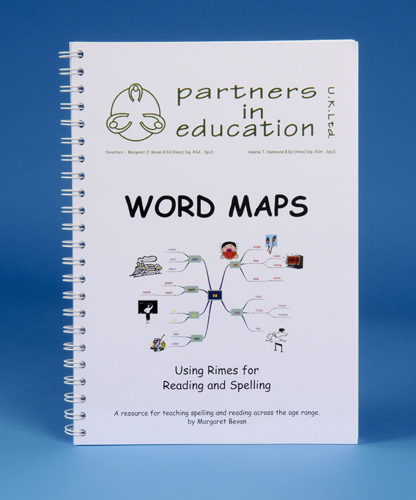This book is a resource which quickly enables educators to access words and sentences to fit the spelling pattern being taught.
Word maps
£19.50
In stock
In stock
Description
This book, by Margaret Bevan, is a resource which enables educators to quickly access words to fit the rime or spelling pattern being taught. It helps identify which rimes are useful, both in terms of the quantity and the appropriacy of associated words. It expands the spelling pattern through morphology.
Presentation of word lists
Word lists of increasing difficulty for differentiation in the classroom, are accompanied by sentences. These sentences can be used for dictation or precision reading. Each rime is also presented as a word map, that is, in a graphical ‘mind map-type’ format. This resource is particularly useful for the class teacher at the primary level who needs to adopt a more inclusive approach. It is also useful for the secondary and adult teacher who is dealing with basic literacy difficulties but does not wish to demean their learner with a focus on three-letter words. This approach can also benefit those learners who have an inherent phonological weakness, yet visual strength.
Benefit for dyslexic learners
Using a Word Map approach appeals to holistic learners, typically dyslexics. It makes the pattern explicit and demonstrates its potential use in other connected words. It allows for differentiation within a group or class. The word map can be limited or extended in line with the pupil’s ability.
Enhances memory
The incorporation of colour, images, and codes enhances memory, especially when they are created or added by the learner themsleves.
How the book is organised
Each page has five categories of rime unit –
The first column contains words with the rime (ab) plus a single-letter onset, e.g., cab dab fab jab lab nab tab. The second column has the same rime with blends or digraphs—blab, crab, drab, flab, grab, scab, slab, etc.
The third column adds a morpheme (usually a prefix or suffix) such as shabby, tabby, crabby or tablet.
The fourth column uses the same rime words in compound words – cabdriver, taxicab, minicab.
The fifth column uses the rime in polysyllabic words – baboon. establish, taboos, vocabulary.
Each page has a basic illustrative word map, but coloured illustrative pages are included to demonstrate the potential of this learning technique.
Many students are excellent natural spellers. The extensions to compound or polysyllabic words provide a wonderful opportunity for vocabulary development.
Pages are presented alphabetically by rime pattern.







What others are saying
There are no contributions yet.